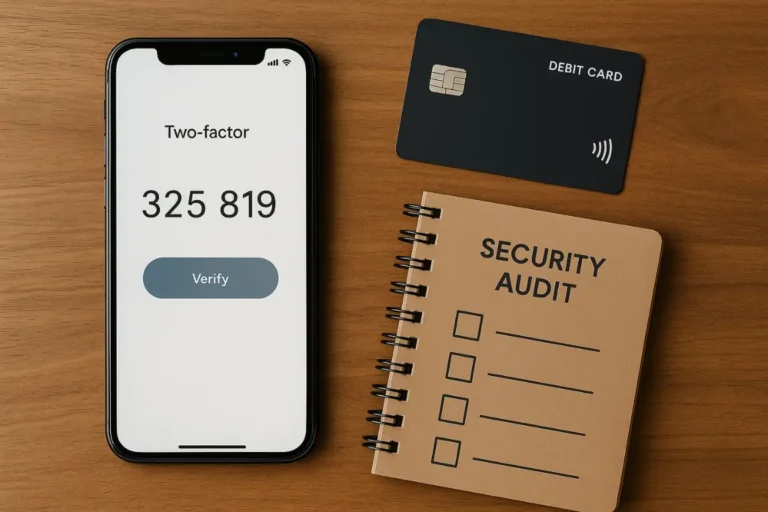Best virtual debit card Apps for secure online spending
Online life looks simple until a card number leaks on a shaky café network. A single breach can lock funds while you cross a border, and replacing a plastic card takes weeks. Virtual debit cards fix that gap by creating fresh numbers on demand and letting you kill them without touching the main account. They feel like disposable email addresses for money. Below is a field-tested guide to the best virtual card apps, how to choose one, and the daily habits that keep every purchase safe. For the bigger picture of how these tools fit into a complete wallet, the international banking apps guide for 2025 sets the context.

Why virtual cards beat plastic on the road
Plastic cards work fine when you swipe at trusted stores, but nomads book guesthouses on obscure portals, buy software from start-ups, and pay for coworking on different continents every quarter. Each new merchant gets storage rights to your number, and data breaches remain common. Virtual cards:
- isolate risk by giving each vendor a unique number
- let you set spend limits before the transaction happens
- delete themselves after one use or stay alive only for a specific merchant
- save you from cancelling the primary card if a vendor is hacked
They also smooth accounting. Label one card “Subscriptions” and another “Client Ads,” then export clear reports at tax time.
Features that matter more than marketing claims
- Instant issuance
You should get a fresh number in seconds after topping up or linking a funding source. Revolut, Wise, and Privacy.com hit that target. - Single-use versus merchant-locked
Disposable numbers expire after the first charge. Merchant-locked cards stay open but only accept charges from one place. Mix both styles depending on risk. - Spend controls
Set daily, monthly, or total caps. Wise lets you drop the limit to one cent once the payment clears, blocking surprise renewals. - Funding flexibility
Some apps pull from a multi-currency balance, others bill a linked debit card. Check fees on each route, especially outside the US. - Country availability
Privacy.com remains US-only. Revolut covers more than thirty countries. Clasp now serves Singapore, Malaysia, and Australia. Confirm before you count on an app. - Security extras
Two-factor login, biometric unlock, and address whitelists should come standard. Look for the ability to pause a card without deleting it, useful for travel breaks.
The stand-out apps in 2025

Revolut
Unlimited virtual cards on all paid plans and one disposable card even on the free tier. Numbers rotate after each transaction, blocking any future charge. Revolut ties directly into its multi-currency wallet, so you pay in the merchant’s currency at a tight spread.
Best for power users who juggle many currencies and need self-destructing numbers.
Wise
Two free virtual cards sit beside the physical card. Each pulls from any of fifty-plus currency balances, dodging dynamic conversion. Wise cards live inside the same mid-market FX engine that made the service famous.
Best for freelancers who invoice in multiple currencies and want direct spend from held balances.
Privacy.com
Create merchant-locked or single-use numbers, cap them at any dollar amount, and fund from a US checking account. The service remains free because it earns interchange fees.
Best for US nomads who test lots of SaaS trials and never want auto-renew surprises.
Clasp
A recent entrant in Asia-Pacific. Issues multi-currency virtual Visa cards to residents of Singapore, Malaysia, and Australia. FX margin sits at 0.8 percent. ATM support is missing, but online spend is the priority.
Best for South-east Asia founders when Wise is unavailable.
Skrill
Once popular with gamers, Skrill now offers virtual cards tied to USD, EUR, and GBP wallets. FX rates trail Wise yet integration with niche marketplaces is unmatched.
Best for users on betting or adult content platforms that block mainstream cards.
Real-world scenarios you can steal
- Flight flash sales : A low-fare alarm often vanishes in minutes. Save a virtual card named “Flights” with a preset cap of three hundred euros so checkout is one tap.
- Coworking trials : Many spaces bill one euro to verify a card. Use a single-use number; if they forget to cancel, the charge fails harmlessly.
- Client ad budgets : Media buyers spin a new card per campaign, cap it at the ad spend, and freeze it if click costs spike.
- Hotel check-ins : Some hotels pre-authorise large holds. Generate a card with a limit set to the deposit plus ten percent, then retire it at checkout.
Setting up without headaches
- Finish ID verification on a strong connection before you travel.
- Label each card with a clear name: “Adobe Sub,” “Lisbon Flat Deposit,” “Spotify.”
- Store numbers in a password vault, never in plain screenshots.
- Audit cards on the first Sunday each month. Delete any idle numbers.
- Keep a backup funding route. If Wise blocks a top-up, route through PayPal or a bank transfer.
Safety habits for every public network
- Run a reputable VPN, especially on shared hostel Wi-Fi.
- Turn on location-based security so card use outside the phone’s GPS triggers checks.
- Use biometric unlock so a pickpocket cannot browse card lists.
- Rotate high-risk merchant cards every quarter even if nothing goes wrong.
What to do if a card number leaks
Virtual cards shine here. Freeze or delete the compromised number. The merchant can’t charge again, and your main balance stays untouched. Issue a fresh card and carry on. No frantic calls, no waiting for a plastic replacement.
Conclusion
Virtual debit cards fence off risk, tame subscription creep, and add precise control over a roaming budget. Pair at least two apps one global like Revolut and one niche like Privacy.com so every payment rail has a backup. When you need a dedicated place to park client income and keep tax money separate, look at online business bank accounts for freelancers and round out a stack that travels as well as you do.






